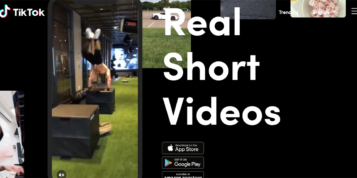When it comes to social media marketing, sometimes simplicity is key. Most people in the digital industry around the world vividly remember the day they were hit with this realisation. After countless strategy meetings, audience analysis presentations, hours of data crunching, and intense research plumbing the psychological depths of the internet, they posted something incredibly straightforward and received an overwhelming response.
For example, what did the hardworking professionals behind Krispy Kreme’s digital marketing think when a simple picture of the classic donut with the caption, “Ooo, original glazed” generated over 32,000 likes on Facebook within five days? What did the Coca-Cola team do to earn 3,280 shares, 1,416 comments, and more than 46,000 likes with a post on 4 May that featured a standard image of a bottle on a field and the caption, “Just right, day or night!”
Yes, there is a common denominator here. In an increasingly technical and complicated world, people respond to simplicity. A straightforward approach is refreshing and leaves room for further interaction. With that in mind, here is a modest list that humbly attempts to encapsulate something seemingly unfathomable, that is, the content that drives greater levels of engagement on social media.
Be visual: The thousand words cliché is overused merely by fault of being true. People respond to visual stimulation. However, it is important to be strategic about the use of images. They should always be chosen for qualities that encourage brand awareness, an emotional connection, and a desire to respond.
The Krispy Kreme post was probably so successful because it used an iconic product central to its brand and was paired with a few demonstrative words that allowed for further discussion. Coca-Cola was successful partially from the placement of its classic bottle on a sports field, which appealed to the hearts of sports fans around the world.
Show personality: People use social media to interact with other people, not faceless international corporations. Brands should incorporate their signature characteristics into an online persona that can interact with an audience on their level. A company can even employ counterintuitive tactics, if they fit in with their brand profile, by focusing on ‘real-life activities’ rather than those in the digital world.
For example, fast food chain Chick-fil-A recently reached the 5 million mark of fans on its Facebook page partially due to the popularity of an application that encourages people to get off the social network and go outside for some “good old-fashioned backyard games with the family.” The app contains suggestions for more traditional activities in the ‘real world’ while still getting people to engage online.
Fellow fast food chain Jack in the Box uses humor and randomness to develop a character that makes it stand out. An example thank you post on Twitter reads, “Thanks. You are a true fan. Not like my neighbor who pretends to like my dog to get free Tacos. That dude’s totally fake.” These posts make fans feel like they are interacting with a human being, a funny and weird one at that, rather than a huge corporation and this inspires greater levels of engagement.
Celebrate: Holidays, special events, company milestones, and basically anything that moves a bit differently from the average day, are great for creating a sense of inclusion and community. Twitter announcements about store openings could create queues of fans waiting in anticipation and sharing their stories about the brand, creating a memorable experience. Posts celebrating holidays highlight the human side of a corporation, showing that even enormous enterprises are made up of people too. When focusing on an event, it is crucial to be personal but remain universal to draw people in without excluding anyone.
An excellent example of this is P&G’s ‘Thank You Mom’ campaign celebrating the mothers behind the international athletes competing for Olympic glory this summer. By telling a universally identifiable story about mothers around with the world with subtle brand messaging, the campaign’s flagship video has earned more than 8.7 million views collectively on YouTube. More than 16,000 people have used a Facebook app that encourages them to share the video and thank their moms directly with photos and text that scrolls on the page. The campaign specific Twitter handle has reached 27,000 followers, more than the company itself. And the campaign has achieved all of this in just over a month.
Be direct: Perhaps a strange concept to many advertisers, direct calls to action on social media can be more successful if they are stated clearly without any copywriting flourishes. American retailer Target is particularly adept at using holidays and special events to achieve results, but it also knows how to use a well-timed call to action. On 10 May, the company posted a branded image of a birthday cake with the caption, “This year we turn fifty and fabulous! Instead of birthday spankings, how about we go with birthday ‘likes’?” The post received nearly 68,000 likes and 1,080 comments.
Be inquisitive: One of the best ways to invite engagement is to ask a question. Fill in the blank posts, with clever branding applied, are a simple and streamlined way for fans to share their opinions and get a discussion started. Either/or questions, such as “Cake or Cookies?” can also be remarkably effective. Trivia posts allow for interaction while also increasing brand awareness. They can be a fun way of showcasing particular aspects of a brand while getting the audience to participate. Challenges like treasure hunts and crowdsourcing competitions can create cohesive branded experiences for deeper levels of engagement.
Overall, the complexities of social media marketing can be stripped down to reveal what should be at the heart of all activities: meaningful human interaction.






